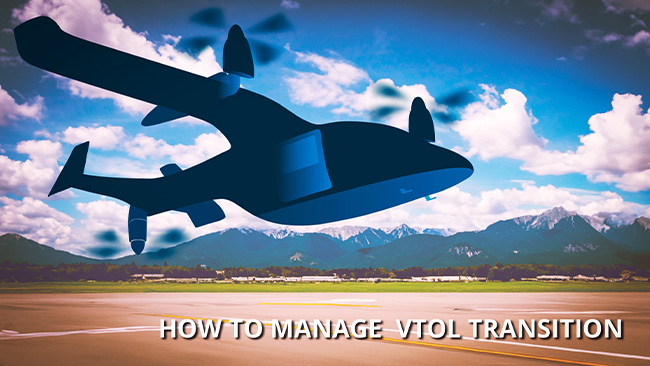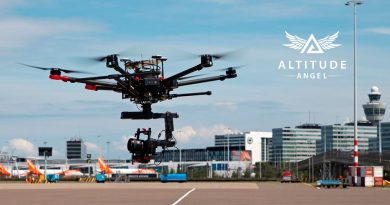How to manage a VTOL transition
Vertical Takeoff and Landing (VTOL) aircraft are becoming increasingly popular due to their ability to combine the benefits of both fixed-wing aircraft and helicopters. These versatile vehicles are capable of vertical takeoff and landing, like a helicopter, and can transition to forward flight, resembling a conventional fixed-wing aircraft. However, managing the transition between these flight modes can be challenging. In this article, we will explore an approach to effectively manage a VTOL transition.
Traditionally, a common method involved dividing the flight into different phases: VTOL flight, forward flight, and transition phases. During VTOL flight, the vertical propellers control the aircraft, providing pitch, roll, yaw, and vertical thrust. In forward flight, the vertical propellers are turned off, and the UAV operates like a fixed-wing aircraft. Transition phases enable the aircraft to switch between these two modes. However, this approach can be rigid and inefficient.
A more advanced approach involves creating smooth transitions between the flight modes. This is achieved through the use of mixers that determine which control inputs are active, or a combination thereof, based on a control variable, typically the flight speed. The Veronte autopilot offers the flexibility to develop custom control laws that adapt to the specific platform and its requirements.
By using mixers, the aircraft control laws can be smoothly transitioned from vertical to horizontal flight. As the vehicle gains speed and generates lift on the wings, the control inputs gradually transition from the vertical propellers to the wing control surfaces. This gradual transition allows for better control and stability throughout the process, improving the overall performance of the aircraft.
Furthermore, this approach eliminates the need for specific flight phases dedicated to each flight mode. Instead of disabling certain controls during VTOL or forward flight phases, all controls remain active during the transition. This continuous adaptability ensures a smooth and efficient transition, reducing the complexity of the control system.
The benefits of this approach are significant. Smooth VTOL transitions enhance flight safety and stability, allowing for precise control during critical flight maneuvers. It also optimizes the efficiency of the aircraft, as binary transitions can lead to abrupt changes in flight characteristics and increased power consumption.
In conclusion, managing a VTOL transition is a crucial aspect of operating a VTOL aircraft effectively. Rather than relying on predefined flight phases, a flexible approach that utilizes mixers and custom control laws allows for smooth transitions between vertical flight and forward flight. The Veronte autopilot’s adaptability enables the creation of control systems that are tailored to the specific platform, enhancing the aircraft’s performance, stability, and safety. With this approach, VTOL aircraft can seamlessly transition between modes, unlocking their full potential for a wide range of applications.




